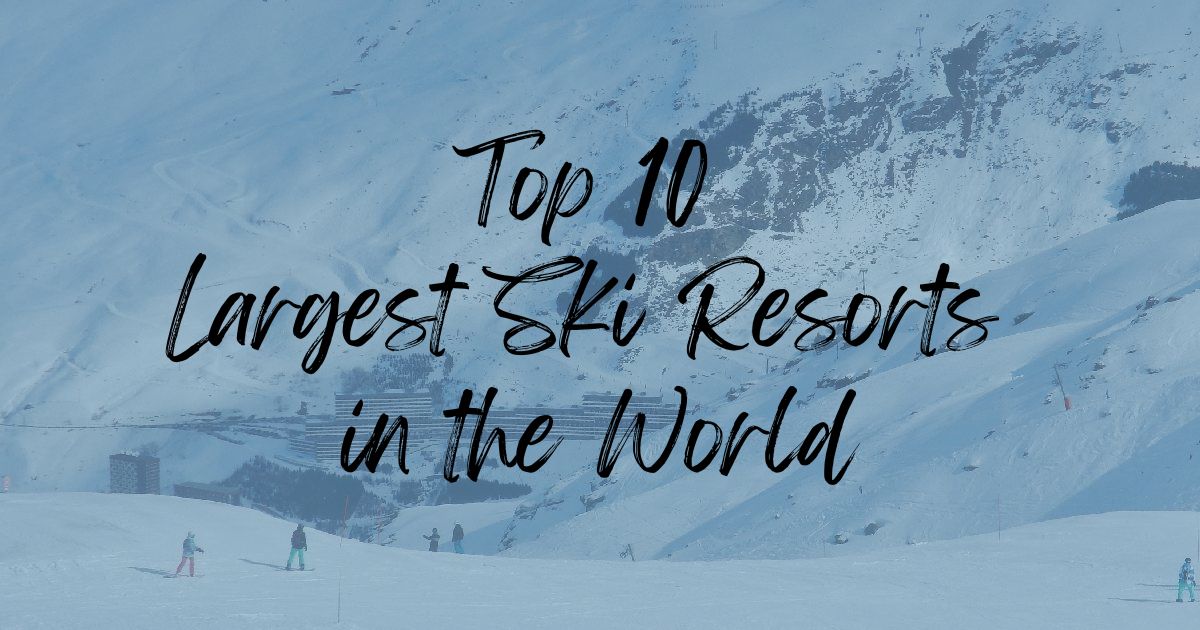Ski enthusiasts often dream of carving their way down the largest ski resorts in the world, places where vast landscapes and endless runs promise adventure and excitement. From the Alps to North America, these ski areas are not just about size; they offer unique experiences, challenging skiing, and a range of amenities that cater to both novices and seasoned skiers. In this guide, we’ll take you through the biggest ski resorts across the globe, detailing their expansive terrains, season lengths, highest points, and unique features that make each one special.
10. Park City, USA
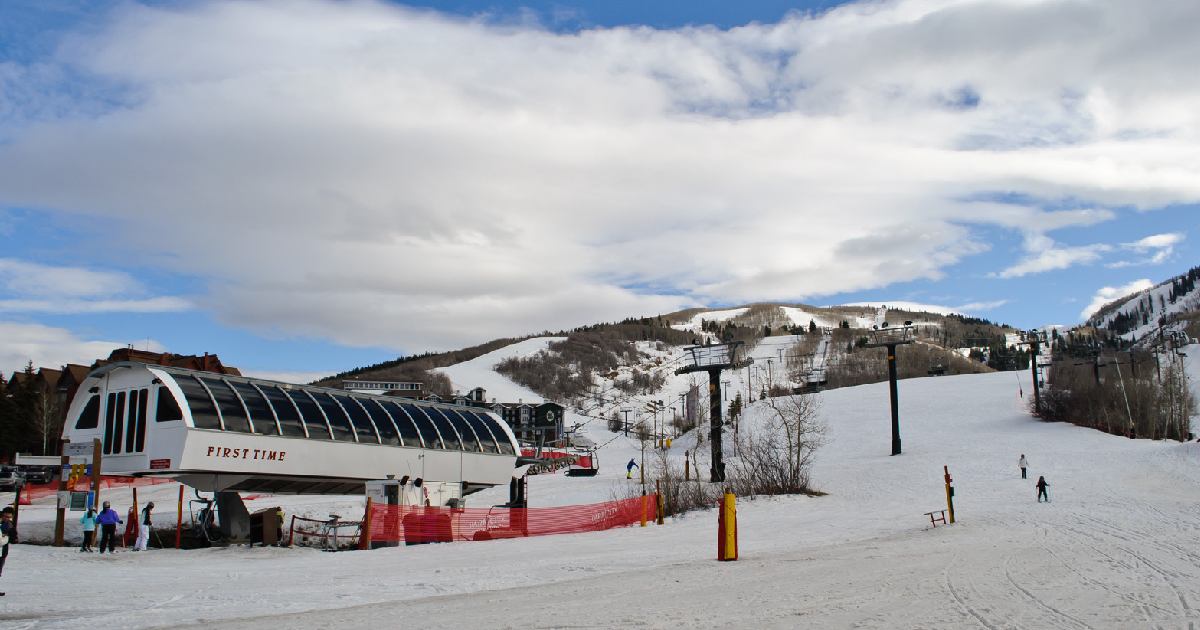
- Total Skiable Terrain: 7,300+ acres
- 330+ Runs
- 40 Lifts
- Season Length: November to April
- Highest Point: 10,026 feet
- Key Feature: Largest ski area in the US, perfect for all skill levels
Park City, nestled in the Wasatch Range of Utah, is renowned as the largest ski resort in the United States. Its history dates back to 1884, when it was founded as a silver mining town. Today, it has transformed into a bustling ski resort with over 7,300 acres of skiable terrain. Park City is divided into two main areas: Park City Mountain and Canyons Village, which together provide a diverse array of slopes for all skill levels.
Beginners can enjoy the gentle slopes of High Meadow Park, while advanced skiers can tackle the challenging runs on Jupiter Peak. The resort’s extensive lift system, including the Quicksilver Gondola that connects the two areas, ensures minimal wait times and maximum skiing time. Park City’s proximity to Salt Lake City International Airport makes it an incredibly convenient destination, ideal for both short getaways and extended vacations.
9. Whistler Blackcomb, Canada
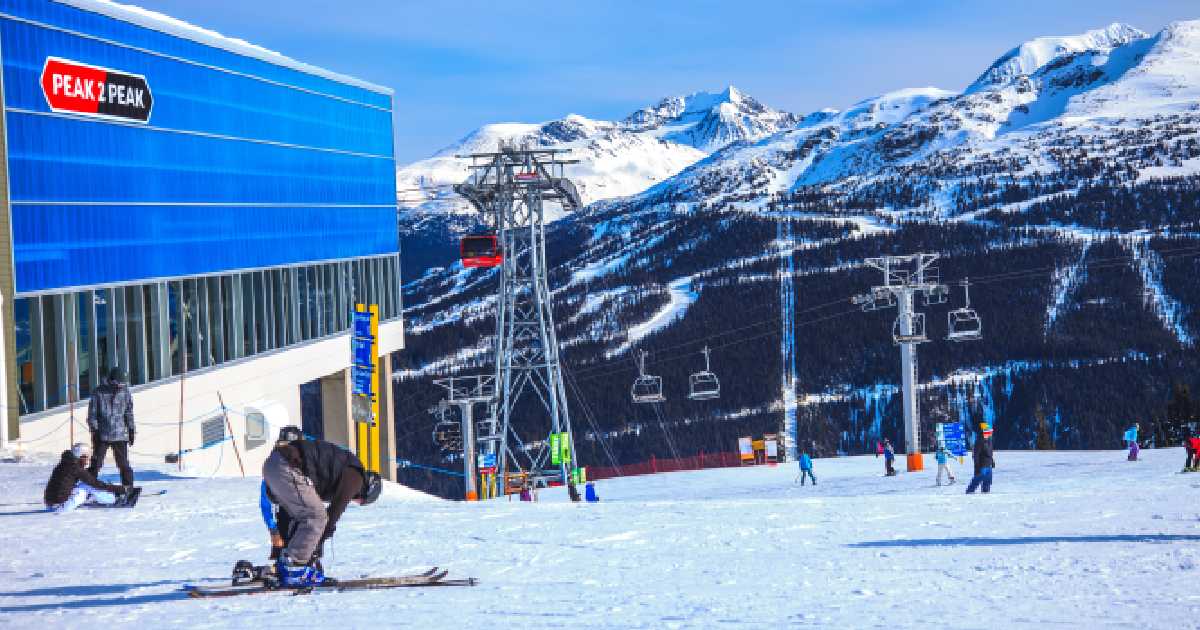
- Total Skiable Terrain: 8,171 acres
- 200+ Runs
- 37 Lifts
- Season Length: November to May
- Highest Point: 7,494 feet
- Key Feature: Largest ski resort in North America, with varied terrain and scenic views
Whistler Blackcomb, located in British Columbia, Canada, is a legendary ski resort known for its vast terrain and stunning alpine scenery. The resort comprises two mountains, Whistler and Blackcomb, connected by the iconic Peak 2 Peak Gondola. This impressive lift system allows skiers to effortlessly transition between the two peaks, offering unparalleled access to over 8,000 acres of skiable terrain.
Whistler Blackcomb boasts 16 alpine bowls, three glaciers, and a wide variety of runs suitable for all abilities. Advanced skiers can challenge themselves on the steep couloirs and technical bowls, while beginners and intermediates can enjoy the well-groomed cruisers. Off the slopes, Whistler Village provides a vibrant après-ski scene with numerous dining, shopping, and entertainment options. The resort’s commitment to sustainability and environmental stewardship further enhances its appeal to eco-conscious travelers.
8. Val d’Isère-Tignes, France

- Total Skiable Terrain: 300 km (186.4 miles)
- 159 Runs
- 75 Lifts
- Season Length: November to May
- Highest Point: 3,455 meters
- Key Feature: High-altitude glacial skiing and rich French heritage
Val d’Isère-Tignes, formerly known as L’Espace Killy, is one of the premier ski areas in France. This expansive ski resort links the villages of Val d’Isère and Tignes, offering a combined total of 300 kilometers of slopes. With a significant portion of the terrain located above 2,200 meters, Val d’Isère-Tignes guarantees excellent snow conditions throughout the season.
The resort caters to all levels of skiers, from the gentle blue runs of the Grande Motte Glacier to the thrilling black pistes of La Face. Off-piste enthusiasts will find plenty of opportunities for challenging skiing, including the renowned Col Pers. Val d’Isère’s village exudes charm with its traditional chalets and lively après-ski scene, while Tignes offers a more modern, high-altitude experience with easy access to glacier skiing.
7. Arlberg Ski Area, Austria
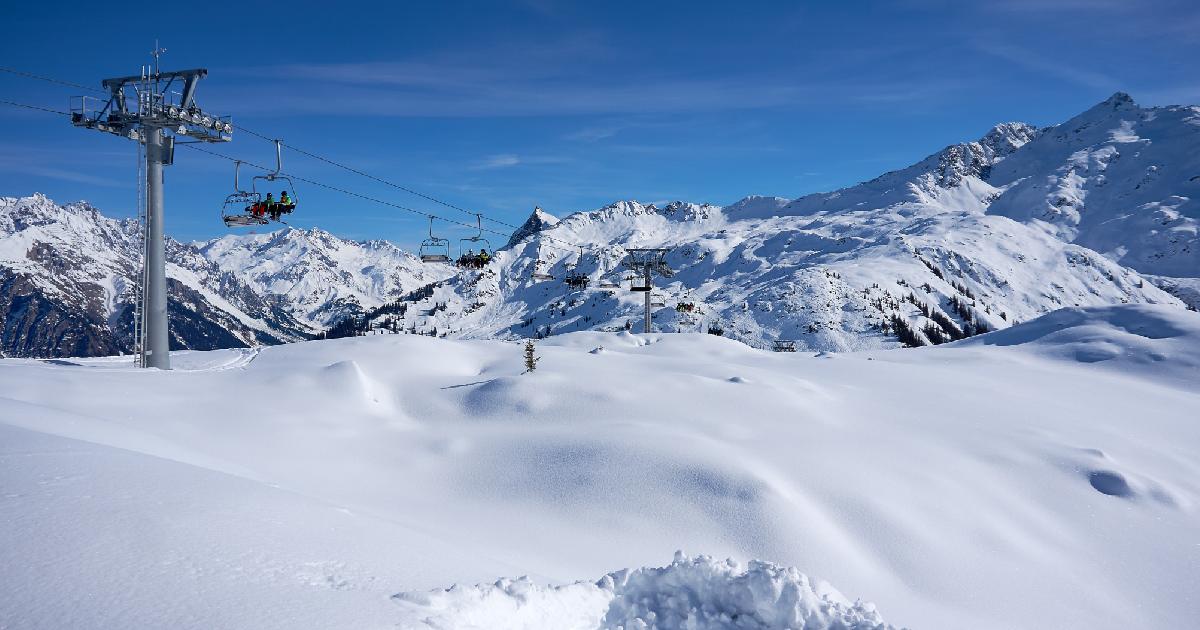
- Total Skiable Terrain: 305 km (189.5 miles)
- 88 Lifts
- Season Length: November to April
- Highest Point: 2,811 meters
- Key Feature: Historical skiing routes and vibrant après-ski culture
Arlberg, Austria’s largest ski area, is a skier’s paradise with a rich history and a variety of slopes. This interconnected ski region includes five main resorts: St. Anton, Lech, Zürs, Stuben, and Warth-Schröcken. The addition of the Flexenbahn Gondola in 2016 created a seamless skiing experience across these areas, solidifying Arlberg’s status as a mega ski area.
The resort offers an extensive network of slopes, from beginner-friendly areas to challenging off-piste routes best explored with a guide. The White Ring route, a historical skiing track, covers 22 kilometers and offers a glimpse into the early days of skiing in Arlberg. After a day on the slopes, St. Anton’s legendary après-ski scene awaits, with lively bars and clubs, while the quieter villages of Lech and Stuben provide a more relaxed atmosphere.
6. Matterhorn Glacier Paradise, Switzerland/Italy
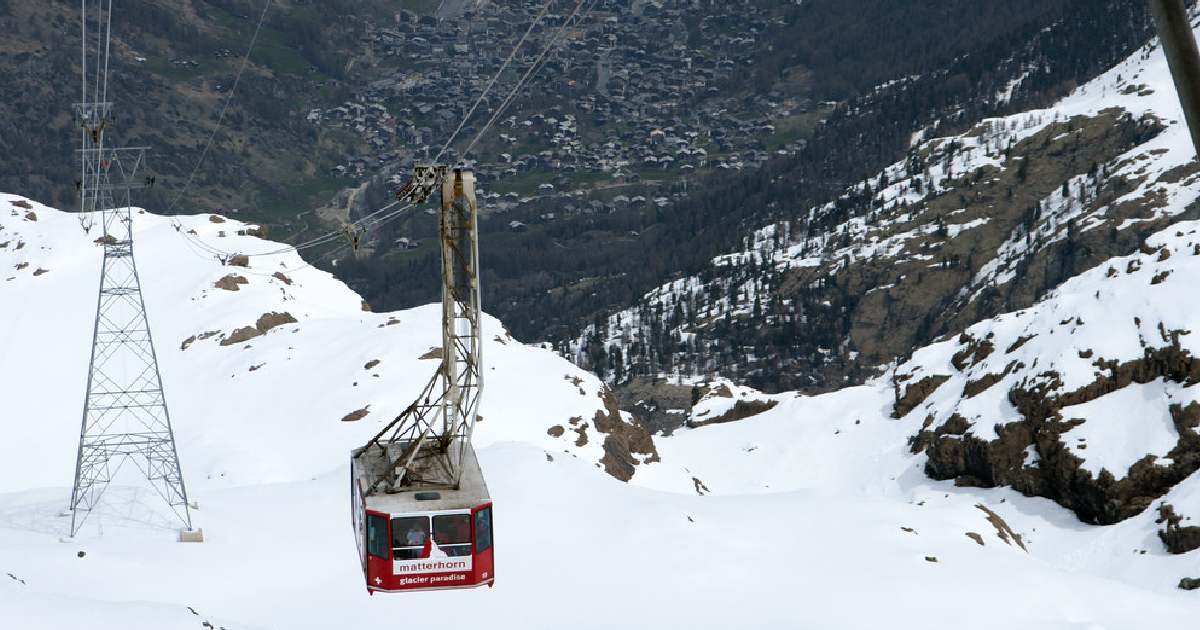
- Total Skiable Terrain: 360 km (223.6 miles)
- 145 Runs
- 52 Lifts
- Season Length: November to April
- Highest Point: 3,820 meters
- Key Feature: High-altitude glacial skiing and iconic Matterhorn views
Matterhorn Glacier Paradise, straddling the border between Switzerland and Italy, offers one of the most picturesque skiing experiences in the world. The resort encompasses Zermatt in Switzerland and Cervinia-Valtournenche in Italy, providing a vast and diverse skiing area. The Matterhorn, one of the most recognizable peaks in the world, serves as a stunning backdrop for this ski paradise.
Skiers can embark on the Matterhorn Ski Safari, exploring a wide range of runs without repeating the same one twice. The high-altitude Theodul Glacier ensures excellent snow conditions year-round, with skiing available well into the summer months. Zermatt is known for its challenging slopes and gourmet dining, including several Michelin-starred restaurants, while Cervinia offers more accessible terrain and a relaxed Italian vibe.
5. Via Lattea (Milky Way), Italy/France

- Total Skiable Terrain: 400 km (248.5 miles)
- 249 Runs
- 70 Lifts
- Season Length: December to April
- Highest Point: 2,825 meters
- Key Feature: Cross-border skiing experience with diverse terrain
The Via Lattea, or Milky Way, is a unique ski area that spans the Italian and French Alps, encompassing eight villages and providing a diverse and expansive skiing experience. On the Italian side, the resort includes Pragelato, Sansicario, Cesana, Clavière, Sauze d’Oulx, and Oulx, while the French side features Montgenèvre.
This cross-border ski area offers a mix of wooded slopes, open bowls, and challenging runs. Beginners can start at the mid-station of Sportina, while advanced skiers can test their skills on the Olympic Women’s Downhill run in Sansicario. The Via Lattea’s extensive lift system and scenic trails ensure that skiers can easily explore the entire region, making it a popular choice for those seeking variety and adventure.
4. Les 4 Vallées, Switzerland

- Total Skiable Terrain: 410 km (254.8 miles)
- 93 Lifts
- Season Length: December to April
- Highest Point: 3,330 meters
- Key Feature: Extensive off-piste opportunities and sunny slopes
Les 4 Vallées is the largest ski area in Switzerland, comprising six resorts: Verbier, Bruson, La Tzoumaz, Nendaz, Veysonnaz, and Thyon. This vast ski region offers a wide range of terrain, from beginner-friendly slopes to challenging off-piste routes that attract advanced skiers from around the world.
Verbier, the flagship resort, is known for its sunny bowl and lively après-ski scene. The Freeride World Tour stops here, highlighting the resort’s reputation for excellent off-piste skiing. Beginners and families will find Nendaz and Veysonnaz welcoming, with their gentle slopes and stunning views of the Rhone Valley. Les 4 Vallées’ extensive lift system ensures easy access to all parts of the resort, making it a top choice for skiers of all levels.
3. Paradiski, France
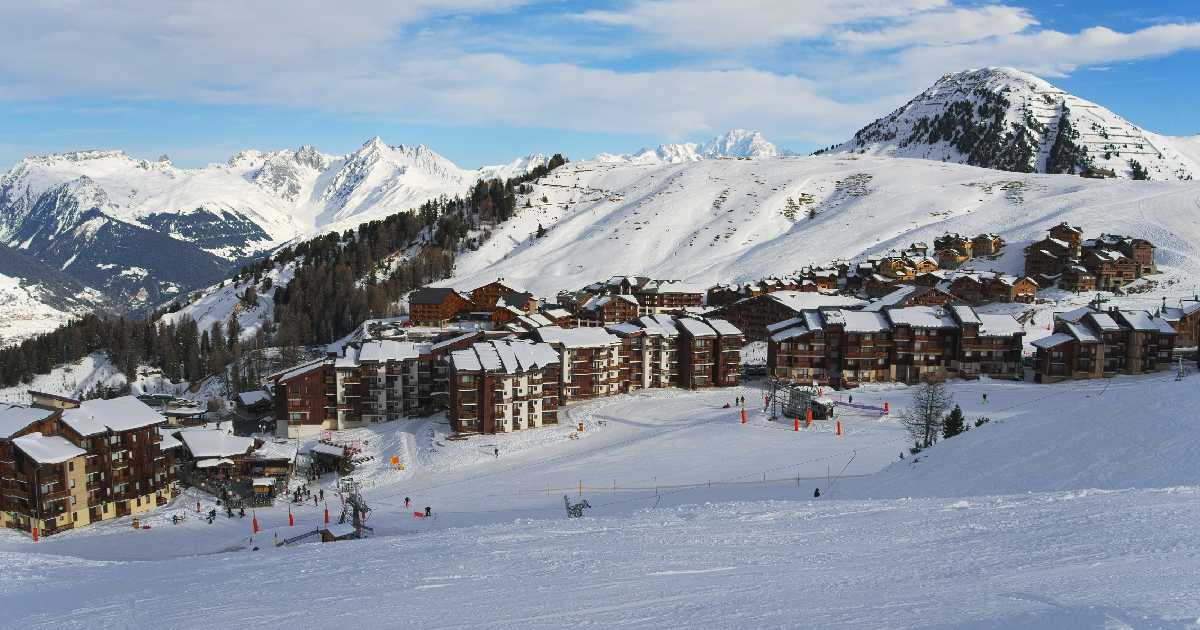
- Total Skiable Terrain: 425 km (264 miles)
- 264 Ski Runs
- 164 Lifts
- Season Length: December to April
- Highest Point: 3,226 meters
- Key Feature: Largest cable car in the world and varied terrain
Paradiski, located in the French Alps, is an interconnected network of three major resorts: Les Arcs, Peisey Vallandry, and La Plagne. This vast ski area spans 20 villages and offers an impressive array of terrain, with 70% of the slopes situated above 2,000 meters, ensuring reliable snow conditions.
The Vanoise Express, the largest cable car in the world, connects Les Arcs and La Plagne, providing seamless access to the entire Paradiski area. Advanced skiers will enjoy the challenging runs on the Aiguille Rouge and Bellecôte glaciers, while intermediates can cruise through the open glades of Peisey Vallandry. With its extensive lift system and diverse terrain, Paradiski caters to skiers of all abilities, making it a popular destination for families and thrill-seekers alike.
2. Sella Ronda, Italy

- Total Skiable Terrain: 500 km (310.6 miles)
- 222 Lifts
- Season Length: December to April
- Highest Point: 3,270 meters
- Key Feature: Scenic ski circuit around the Sella massif
The Sella Ronda, located in the heart of the Dolomites in Italy, offers a unique skiing experience with its circular route around the Sella massif. This ski area is part of the larger Dolomiti Superski region, which includes 12 ski resorts and a total of 1,200 kilometers of slopes.
The Sella Ronda circuit itself spans 40 kilometers and can be completed in either a clockwise (orange route) or counterclockwise (green route) direction. Along the way, skiers can enjoy breathtaking views, charming Italian villages, and a variety of terrain suitable for intermediates. For those seeking more challenging skiing, the nearby slopes of Gran Risa offer steep runs that host World Cup races. The Sella Ronda’s scenic beauty and unique layout make it a must-visit for ski enthusiasts.
1. Les 3 Vallées, France

- Total Skiable Terrain: 600 km (372.8 miles)
- 328 Ski Runs
- 166 Lifts
- Season Length: December to April
- Highest Point: 3,230 meters
- Key Feature: Largest interconnected ski area in the world
Les 3 Vallées, located in the Northern French Alps, is the largest interconnected ski area in the world. This expansive resort encompasses three main valleys: Courchevel, Méribel, and Val Thorens, each offering a unique skiing experience. Val Thorens is the highest resort in Europe, providing excellent snow conditions and stunning views from its highest point at 3,230 meters.
Les 3 Vallées boasts vast terrain, from gentle slopes for beginners to challenging off-piste routes for advanced skiers. The interconnected lift system ensures easy access to all parts of the resort, allowing skiers to explore the entire area without ever having to take off their skis. The charming mountain villages, Michelin-star restaurants, and lively après-ski scene add to the appeal, making Les 3 Vallées a top destination for ski enthusiasts worldwide.
Conclusion
The largest ski resorts in the world offer more than just vast terrain with ski lifts; they provide unique experiences, stunning scenery, and a range of amenities that cater to all types of skiers. Whether you’re looking for high-altitude glacial skiing at Matterhorn Ski Paradise, the extensive off-piste opportunities at Les 4 Vallées, or the scenic beauty of the Sella Ronda, these ski areas promise unforgettable adventures. So, pack your gear, hit the slopes, ride a ski lift, and experience the thrill of skiing at the world’s best ski resorts.
Frequently Asked Questions (FAQs)
What is the world’s largest ski resort?
The world’s largest ski resort is Les 3 Vallées in France. It boasts 600 kilometers (372.8 miles) of interconnected slopes, 328 ski runs, and 166 lifts across three main valleys: Courchevel, Méribel, and Val Thorens. This vast network provides diverse terrain suitable for all skill levels, from beginners to advanced skiers, making it a premier destination for ski enthusiasts.
What is the largest ski resort in the United States by acreage?
Park City in Utah is the largest ski resort in the United States by acreage. With over 7,300 acres of skiable terrain, Park City offers a vast array of runs and 40 lifts, catering to all skill levels. This expansive resort is easily accessible, located just 40 minutes from Salt Lake City International Airport, and features extensive amenities, making it a top choice for skiers.
What are the big three ski resorts?
The “Big Three” ski resorts typically refer to Banff Sunshine, Lake Louise Ski Resort, and Mt. Norquay in Banff National Park, Canada. These renowned resorts offer a combined 8,000 acres of skiable terrain, stunning mountain scenery, and diverse runs for all skill levels. Known for their world-class skiing and vibrant après-ski scenes, they are a top destination for winter sports enthusiasts.
What’s the highest ski resort in the US?
The highest ski resort in the United States is Breckenridge Ski Resort in Colorado. Its summit reaches an impressive elevation of 12,998 feet (3,963 meters) at the top of Imperial Express SuperChair, the highest lift-served terrain in North America. This elevation provides skiers with excellent snow conditions and breathtaking views, making Breckenridge a popular destination for high-altitude skiing.
Where is the hardest place to ski in the US?
One of the hardest places to ski in the United States is Jackson Hole Mountain Resort in Wyoming. Known for its steep terrain and challenging runs, Jackson Hole features iconic expert trails like Corbet’s Couloir, which demands precision and skill. The resort’s rugged landscape and advanced skiing conditions make it a premier destination for thrill-seekers and experienced skiers.

